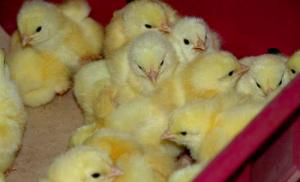Lynx in the forests near Moscow. Rare animals of the Moscow region
Lynx lynx Linnaeus, 1758
Squad Carnivora - Carnivora
Felidae family - Felidae

Status
Spreading
Forests and mountains of Eurasia, with the exception of Southern Europe (1). At the end of XIX - beginning of XX centuries. the species constantly lived in the northern and eastern suburbs of Moscow (2–5), but in the 1990s. was regularly recorded only on the territory of the State complex "Zavidovo" and in the Shatursky district, occasionally also entering the border regions of Mozhaisk, Shakhovskoy, Lotoshinsky, Taldomsky districts. In the 2000s the area of distribution has expanded somewhat. The species was regularly recorded and, apparently, bred in the west of the Shakhovsky and Mozhaysky districts (6–9); in Dmitrovsky, in the west of Odintsovsky, in the north of Naro-Fominsky (11) and in Istra (12) districts.
Number and trends of its change
The dynamics of the lynx population in the Moscow region is apparently associated with the dynamics of the abundance of the hare and decreases 2–4 years after the fall in the abundance of the latter. In the mid-1980s, against the background of the maximum number of hare, from 26 to 51 lynxes were counted (10); following a significant decline in the number of hare in the late 1980s - early 1990s. there was a significant decrease in livestock (12 animals in 1994) (11). In 2000–2003 with the increase in the number of hare, the number of lynx increased to about 30 individuals (13).
Features of biology and ecology
Prefers dense old-growth forests with lots of deadwood. The hunting grounds (20–250 km2) are more or less constant; however, with a lack of food, the species is able to make long and extended migrations. The basis of food is hare, to a lesser extent - roe deer, young wild boars, black grouse, rodents. There are 1–4, more often 2–3 cubs in a litter (14–16).
Limiting factors
Increased recreational load on Moscow region forests, their fragmentation as a result of intensive dacha development. A decrease in the number of wild ungulates, which makes it difficult for lynxes to survive during periods of low numbers of mountain hare. Poaching, a factor of concern, an increase in the number of stray dogs.
Conservation Measures Taken
Trade is restricted in accordance with the CITES convention (Appendix II). The species is listed in the Red Books of all adjacent regions, except for Smolensk and Tver. It has been under special protection in the Moscow region since 1978 (17). Habitats are protected in the State Complex "Zavidovo" and three regional reserves.
Prevention of forest fragmentation in lynx habitats. Preservation of ecological corridors connecting large areas of forests. Strict restriction on the allocation of summer cottages in the border areas of the region. Strengthening the fight against poaching.
There is no need for artificial breeding.
Sources of information
1. Lynx. Regional features..., 2003;2. Geptner and Sludsky, 1972; 3. Satunin, 1895; 4. Bekshtrem, 1927; 5. Shibanov, 1927; 6. Podolsky et al., 2000; 7. Ecological framework... 2003; 8. Forests of the axial zones of the Gzhatsko-Mozhaisk ridges, 2004; 9. Verkhneruzsky..., 2005; 10. O.S. Grinchenko, E.O. Ponomareva, N. Butorina; P. Smolyaninov; P. Voevodin, pers. message; 11. Data from S.A. Podolsky; 12. Karaseva et al., 1999; 13. State of hunting resources..., 2004; 14. Matyushkin, 1974; 15. Zheltukhin, 2003; 16. Flint et al., 1970; 17. Decision of the executive committees..., 1978.
Compilers
S.A. Podolsky, V.A. Zubakin
 |
LYNX
lynx lynx Linnaeus, 1758 [ Felis lynx L.]
Squad Carnivora - Carnivora
Felidae family - Felidae
Spreading
Forests and mountains of Eurasia, with the exception of Southern Europe (1). At the end of XIX - beginning of XX centuries. the species constantly lived in the northern and eastern suburbs of Moscow (2–5), but in the 1990s. was regularly recorded only on the territory of the State complex "Zavidovo" and in the Shatursky district, occasionally also entering the border regions of Mozhaisk, Shakhovskoy, Lotoshinsky, Taldomsky districts. In the 2000s the area of distribution has expanded somewhat. The species was regularly recorded and, apparently, bred in the west of the Shakhovsky and Mozhaysky districts (6–9); in Dmitrovsky, in the west of Odintsovsky, in the north of Naro-Fominsky (11) and in Istra (12) districts.
Number and trends of its change
The dynamics of the lynx population in the Moscow region is apparently associated with the dynamics of the abundance of the hare and decreases 2–4 years after the fall in the abundance of the latter. In the mid-1980s, against the background of the maximum number of hare, from 26 to 51 lynxes were counted (10); following a significant decline in the number of hare in the late 1980s - early 1990s. there was a significant decrease in livestock (12 animals in 1994) (11). In 2000–2003 with the increase in the number of hare, the number of lynx increased to about 30 individuals (13).
Features of biology and ecology
Prefers dense old-growth forests with lots of deadwood. The hunting grounds (20–250 km2) are more or less constant; however, when there is a shortage of food, the species is able to make long and extended migrations. The basis of food is hare, to a lesser extent - roe deer, young wild boars, black grouse, rodents. There are 1–4, more often 2–3 cubs in a litter (14–16).
Limiting factors
Increased recreational load on Moscow region forests, their fragmentation as a result of intensive dacha development. A decrease in the number of wild ungulates, which makes it difficult for lynxes to survive during periods of low numbers of mountain hare. Poaching, a factor of concern, an increase in the number of stray dogs.
Conservation Measures Taken
Trade is restricted in accordance with the CITES convention (Appendix II). The species is listed in the Red Books of all adjacent regions, except for Smolensk and Tver. It has been under special protection in the Moscow region since 1978 (17). Habitats are protected in the State Complex "Zavidovo" and three regional reserves.
Prevention of forest fragmentation in lynx habitats. Preservation of ecological corridors connecting large areas of forests. Strict restriction on the allocation of summer cottages in the border areas of the region. Strengthening the fight against poaching.
lynx lynx
Lynx, Eurasian lynx, common lynx - a species of mammals from the lynx genus.
The Eurasian lynx is the largest of all lynxes, with a body length of 80-130 cm and 70 cm at the withers. Males often weigh from 18-30 kg, females weigh an average of 18 kg. The body, like all lynxes, is short and dense. The paws are large, well pubescent in winter, which allows the lynx to walk on the snow without falling through. There are long tassels on the ears. The tail is short, as if chopped off.
There are many variants of the color of the lynx, depending on the geographical area - from reddish-brown to fawn-smoky, with more or less pronounced spotting on the back, sides and legs. On the belly, the hair is especially long and soft, but not thick and almost always pure white with a sparse speck. The southern forms are usually more rufous, have shorter coats, and smaller paws.
The track of a lynx is typically feline, without claw marks. When walking, she puts her hind paw in the footprint of her front paw. If there are several trots, then the rear steps exactly in the wake of the front ones.
The Eurasian lynx is the northernmost of the cat species; in Scandinavia, it is found even beyond the Arctic Circle. It was once very common throughout Europe, but by the middle of the 20th century it had been exterminated in most countries of Central and Western Europe. Successful attempts have now been made to revive the lynx population.
The lynx prefers dense dark coniferous forests, taiga, although it is found in a variety of stands, including mountain forests; sometimes enters the forest-steppe and forest-tundra. She climbs trees and rocks perfectly, swims well.
With an abundance of food, the lynx lives settled, with a shortage, it roams. It can travel up to 30 kilometers per day. The basis of her diet is hares. It also constantly hunts grouse birds, small rodents, less often small ungulates, such as roe deer, musk deer, spotted and reindeer, occasionally attacks domestic cats and dogs, and in the forest - foxes, raccoon dogs and other medium-sized animals. Foxes destroy especially decisively and viciously, even when there is no particular need for this.
The lynx hunts at dusk. Contrary to popular belief, she never jumps on her prey from a tree, but prefers to lie in wait for game in an ambush or hide, and then attack with large, up to 4 m, jumps. The victim is pursued at a distance of no more than 60-80 m, after which it exhales.
With all caution, the lynx is not very afraid of people. She lives in the secondary forests created by them, in young forests, in old cutting areas and burnt areas; and in troubled years it enters villages and even large cities.
The rut of the lynx is in February - March, and at this time the lynxes, usually silent, make loud cries, rumbling and meowing. Pregnancy in females lasts 63-70 days. There are usually 2-3 lynxes in a brood; their refuge is a lair under the twisted roots of a fallen tree, a pit, an earthen cave or a crevice of rocks. Both parents are involved in raising kittens. The brood hunts with the adults until the next breeding season. Females reach puberty at 21 months, males at 33 months. Life expectancy is probably 15-20 years.
Population status of the Eurasian lynx in different countries:
Balkan Peninsula: Several dozen lynxes in Serbia, Macedonia, Albania and Greece.
Germany: Exterminated by 1850 In the 1990s repopulated in the Bavarian Forest and the Harz.
Carpathians: 2200 lynx from the Czech Republic to Romania; the largest population besides the Russian one.
Poland: About 1000 lynxes in Belovezhskaya Pushcha and Tatras.
Russia: 90% of the Eurasian lynx population lives in Siberia. Although lynxes are found from the western borders of the Russian Federation to Sakhalin.
Scandinavia: ok. 2500 lynxes in Norway, Sweden and Finland.
France: Exterminated c. 1900 Settled in the Vosges and Pyrenees.
Switzerland: Exterminated by 1915, repopulated in 1971. From here they migrated to Austria and Slovenia.
Central Asia: China, Mongolia, Kazakhstan, Uzbekistan, Turkmenistan, Kyrgyzstan and Tajikistan.
Transcaucasia: Azerbaijan, Armenia, Georgia.
The commercial value of the lynx is small (fur is used). Like many predators, it plays an important breeding role in forest biocenoses. Only in hunting farms where roe deer, spotted deer, pheasants are bred, its presence is undesirable.
What we have - we do not store, having lost - we cry, but as a rule, we briefly and successfully forget about the existence of animals and birds that once inhabited our small homeland, not to mention such trifles as insects or plants. The list of lost and almost lost is below.
Brown bear
It is hard to believe that such a brown bear, familiar to us from Russian fairy tales, is now endangered. So why is he disappearing? There are many reasons for this: anxiety during the harvesting season for lingonberries and cranberries, summer cottage construction, transport on forest roads, random shooting. What to do? Preserve forests, create nature reserves, impose a ban on hunting other species of animals in bear habitats.
Where it lives: Mozhaysky, Shakhovskoy, Taldomsky, Klinsky, Dmitrovsky districts
Russian desman
The Russian muskrat lives in the Shatursky district of the Moscow region and is also endangered. The reason for this is pollution of rivers and other water bodies, poaching, the use of vents, winter rises in water, early floods, lack of vegetation along the banks of water bodies, and severe droughts. Methods of struggle - the protection of water bodies, the fight against poaching fishing with nets, tops, vents and the destruction of fish by electric current.
hazel dormouse
A funny animal, known to us from the fairy tale "Alice in Wonderland". In Modmoskovie, it still lives in the Tesovsky forest (border of the Mozhaisk and Ruzsky districts), Serpukhov, Sergiev Posad and Leninsky districts. This is a very rare species, the extinction of which is extremely affected by the destruction of forests - the natural habitat.
lynx
A beautiful wild cat that lives literally at your side - in Shakhovsky, Volokolamsk, Istra, Mozhaisk, Lotoshinsky, Klinsky districts. The lynx still lives in the Taldom, Sergiev Posad, Shatursky, Lukhovitsky, Dmitrovsky, Odintsovsky and Naro-Fominsk regions. The threat of extinction has arisen due to the decline in the number of hare and wild ungulates (elk, deer, wild boar), as well as poaching.
river otter
Inhabits the Lama River in the Volokolamsky District, the Verkhneruzskoye Reservoir, the Ruza River, the Moscow River (above the Mozhaysky Reservoir), the Ozerninsky Reservoir and its small rivers, the Vyazemka River in the Odintsovo District, the Protva and Plesenka Rivers in the Naro-Fominsk District, the Dubna and Vyulka Rivers in Taldom district. River otters are a species with a rapidly declining population, the extinction of which is associated with a decrease in the number of fish, reduced access to water in the winter, summer cottage development, violation of the vegetation cover of the coast, pollution of water bodies, and, of course, poaching.
The prevention measure will be to maintain the work of four reserves in the Volokolamsk, Istrinsky, Shatursky and Taldomsky districts, a ban on construction in the floodplain of small rivers, the fight against poaching, limiting the number of beaches, and a ban on the use of jet skis and motor boats in habitats.
The list continues….
The badger leads a sedentary lifestyle. Often drives foxes out of their holes, but he himself does not go far from his home
PHOTO: Andrey Fedorov, Evening MoscowIn the Mozhaisk region, camera traps installed by local biologists caught a lynx and a badger in their lenses. One camera trap was installed near the badger's burrow. The second is next to a small clearing in the forest. The footage shows how the badger emerges from its hole and goes about its badger business. Another camera captured a young lynx that carefully walks around its territory, the so-called "animal circle", which can stretch for tens of kilometers. So the scientists-biologists can be said to be very lucky. There is hope to keep track of the life of these animals in the future.
It should be noted that the lynx is listed in the Red Book. The badger, although not a Red Book animal, is quite rare in the Moscow region. But still more often than a lynx. It can be considered a "candidate" for the Red Book. It is extremely difficult to see him in summer, and in winter he hibernates, not leaving his hole until spring.

For example, in the Dmitrovsky district, a VM correspondent observed a badger exactly a year ago, at first mistaking it for a dog from afar. His hole was also found, dug on the slope of a steep bank.
According to records as of February this year, about 100 lynx individuals live in the Moscow region, Oksana Shevchuk, head of the press service of the Rosokhotrybolovsoyuz Association, told the VM correspondent, 10 of them live in the Mozhaisk district. In summer, it is almost impossible to see a lynx in the wild. This is a very cautious and secretive predator, leading, like all cats, a nocturnal lifestyle. The main food base for the lynx is the white hare, small rodents and birds. However, in winter, the lynx can also hunt larger animals: roe deer and sika deer.
There is a widespread belief, even among seasoned hunters, that lynx often ambush their prey by jumping from a tree onto their prey. Actually it is not. The lynx, as befits a cat, tracks its prey by scent and scent. He can sneak up on her for hours, preparing for a sure throw.
In our forests near Moscow, the lynx has only one serious enemy - the wolf. A pack of wolves can catch a lynx only in open areas - for example, in a field when a predator is mouse. Therefore, the main competitor in the lynx food chain is foxes, which have recently bred in large numbers in the Moscow region. When meeting with a fox, a lynx almost always kills its main competitor, but at the same time, in open areas, it itself can become a victim of wolves or a poacher with a gun.

Akilina Savateeva, a former hunting inspector of the Tver region, is touring her former possessions by boat. Helps on a voluntary basis to his colleagues and scientists to keep records of rare animals and birds in the Dmitrovsky district
PHOTO: Andrey Fedorov, Evening Moscow
The lynx does not have a permanent habitat. It can migrate quite long distances, moving from one area to another. Most often in the Moscow region, according to local hunters, the beast enters the Moscow region from the Tver and Yaroslavl regions. The increase in the lynx population in the Moscow region is due to the improvement of the environment in the region and a decrease in the number of cases of poaching for fur-bearing animals. In the Moscow region, the lynx prefers to settle in mixed broad-leaved forests.













